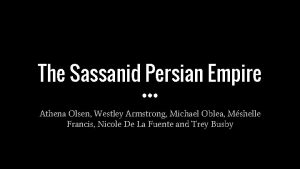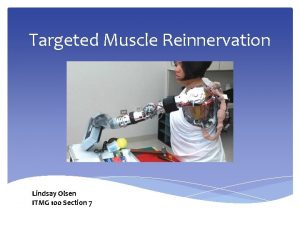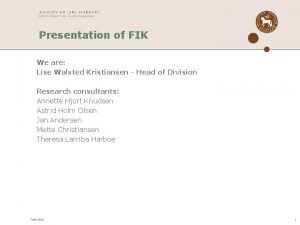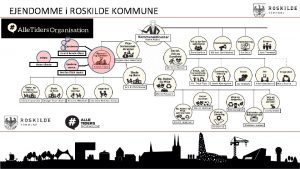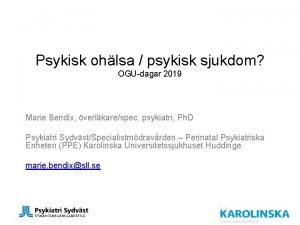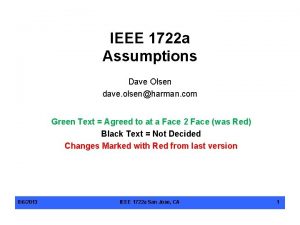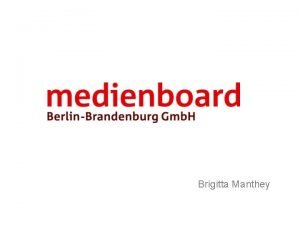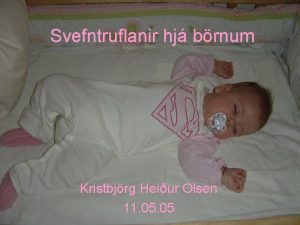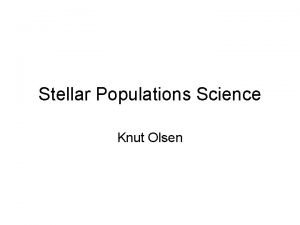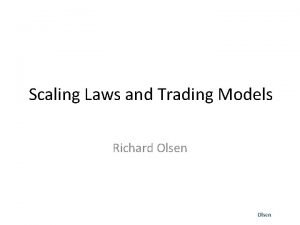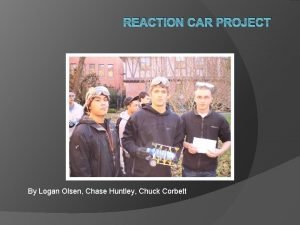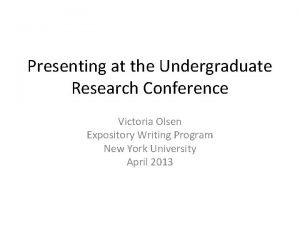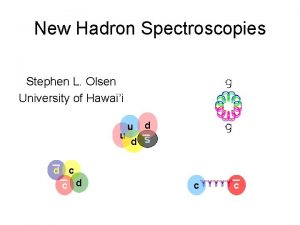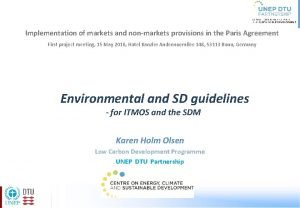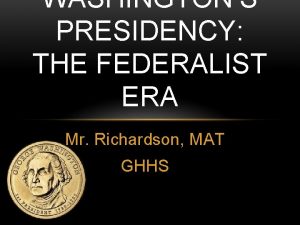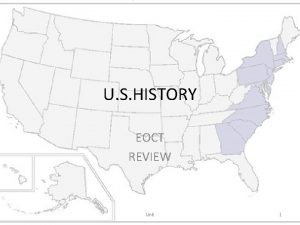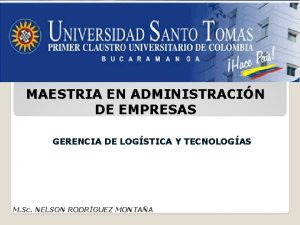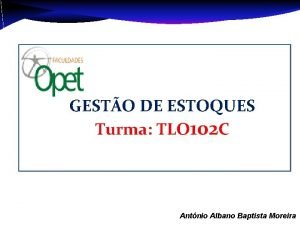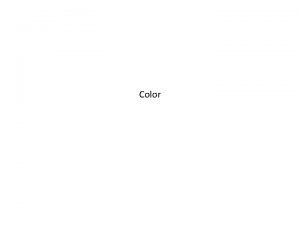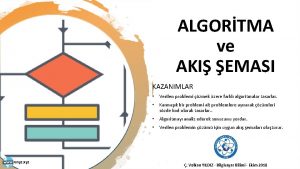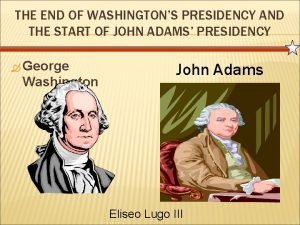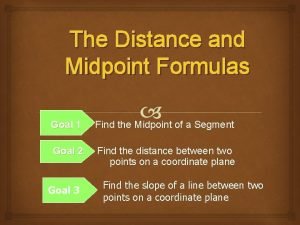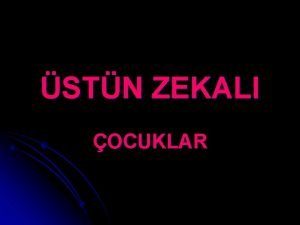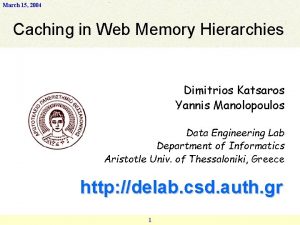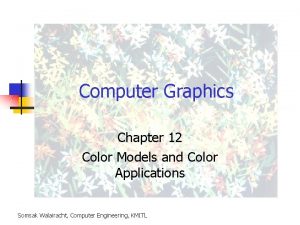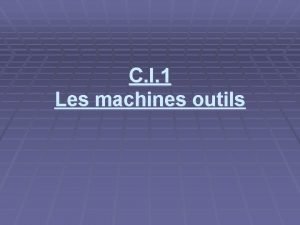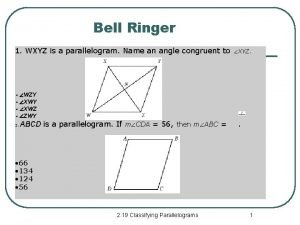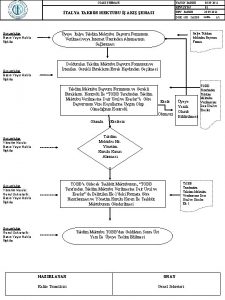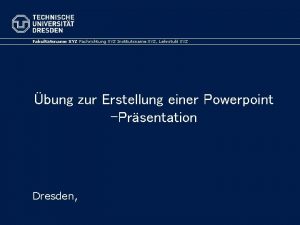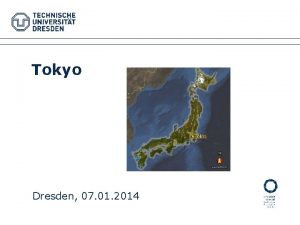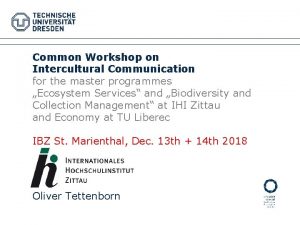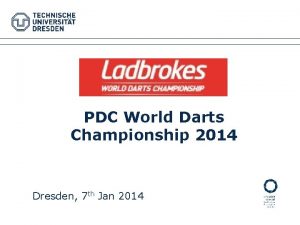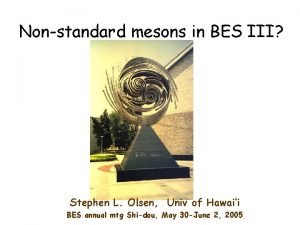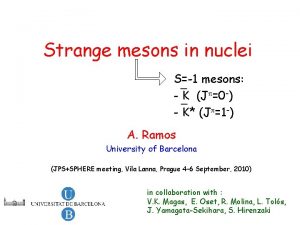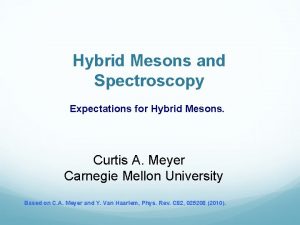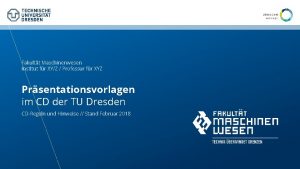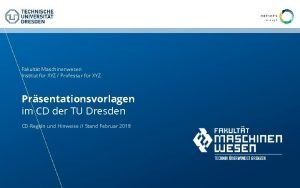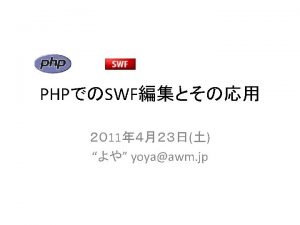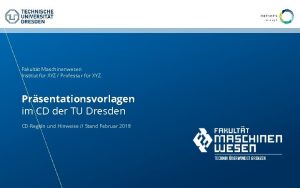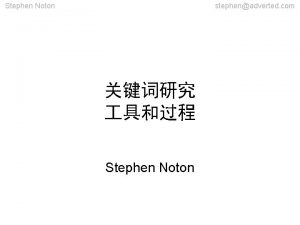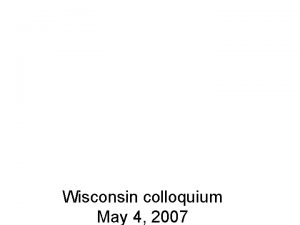The XYZ mesons Stephen L Olsen University of










































- Slides: 42

The XYZ mesons Stephen L. Olsen University of Hawaii PANIC-08 Nov 10 -14, 2008 Eilat

X(3872) X & Y mesons B K p+p-J/ Y(4260) Belle e+e- g. ISRp+p-J/ Y(3940) Belle Y(4008)? Ba. Bar M(p+p-J/ )-M(J/ ) Belle (Decay to final states with a cc pair & Sqi=0 ) M(p+p-J/ ) Ba. Bar B K w. J/ Y(4350) & Y(4460) Ba. Bar M(w. J/ ) e+e- g. ISRp+p- ’ Belle M(w. J/ ) X(3940) e+e- DD*J/ M(p+p- ’) X(4160) e+e- D*D*J/ Belle M(DD*) e+e- g. ISRLc. Lc M(D*D*) M(Lc. Lc)

Neutral cc X & Y mesons Name JPC G (Me. V) Decay modes Expts comment X(3872) 1++ <2. 3 pp. J/ ; g. J/ ; DD* Belle/CDF/D 0/Ba. Bar DD* molecule? X(3940) 0? + ~37 DD* (not DD, w. J/ ) Belle hc’’(? ) Y(3940) ? ? + ~30 (not DD*) Belle/Ba. Bar X(4160) 0? + ~140 (not DD, DD*) Belle Y(4008) 1 -- ~225 pp. J/ Belle Y(4260) 1 -- ~80 pp. J/ (not pp ’) Ba. Bar/CLEO/Belle Y(4350) 1 -- ~75 pp ’ Y(4660) 1 -- ~50 pp ’; Lc. Lc (? ) w. J/ D*D* (not pp. J/ ) hc’’(? ) ccg hybrid? Ba. Bar/Belle @Lc. Lc threshold

Are any of these standard cc charmonium? predicted measured

Is the 1++ X(3872) the cc 1’ (23 P 1) ? ? ? 3872 Me. V • Mass is too low • cc 1’ pp. J/ violates Ispin • Bf(X 3872 pp. J/ )>4% • G(g. J/ ) should be >>G(r. J/ ) • expt: G(g. J/ ) <<G(r. J/ )

Neutral cc X & Y mesons Name JPC G (Me. V) Decay modes Expts comment X(3872) 1++ <2. 3 pp. J/ ; g. J/ ; DD* Belle/CDF/D 0/Ba. Bar DD* molecule? X(3940) 0? + ~37 DD* (not DD, w. J/ ) Belle hc’’(? ) Y(3940) ? ? + ~30 (not DD*) Belle/Ba. Bar X(4160) 0? + ~140 (not DD) Belle Y(4008) 1 -- ~225 pp. J/ Belle Y(4260) 1 -- ~80 pp. J/ Ba. Bar/CLEO/Belle Y(4350) 1 -- ~75 pp ’ Ba. Bar/Belle Y(4660) 1 -- ~50 pp ’; Lc. Lc (? ) Belle w. J/ D*D* hc’’(? ) ccg hybrid? @Lc. Lc threshold It is pretty widely --but not universally-- accepted that the X(3872) is not a standard cc charmonium state. For a dissenting view, see C Meng & KT Chao PRD 75, 114002 (2007)

Could the Y(3940) be charmonium? Bf(B KY 3940)x. Bf(Y 3940 w. J/ ) G(Me. V) Belle (7. 1 ± 3. 1) x 10 -5 87± 34 Ba. Bar Avg (4. 9 ± 1. 1) x 10 -5 (5. 2 ± 1. 0) x 10 -5 33± 12 39± 11 er h t o r all sitions o f True cc) tran ( B K assuming Bf(B KY 3940)<Bf(B KJ/ ) = 1. 0 x 10 -3 G(Y 3940 w. J/ )>1 Me. V ny a n a th tion i r s e n h a hig c tr i x n 0 o 1 r > had c c d ure meas

Neutral cc X & Y mesons Name JPC G (Me. V) Decay modes Expts comment X(3872) 1++ <2. 3 pp. J/ ; g. J/ ; DD* Belle/CDF/D 0/Ba. Bar DD* molecule? X(3940) 0? + ~37 DD* (not DD, w. J/ ) Belle hc’’(? ) Y(3940) ? ? + ~30 (not DD*) Belle/Ba. Bar X(4160) 0? + ~140 (not DD) Belle Y(4008) 1 -- ~225 pp. J/ Belle Y(4260) 1 -- ~80 pp. J/ Ba. Bar/CLEO/Belle Y(4350) 1 -- ~75 pp ’ Ba. Bar/Belle Y(4660) 1 -- ~50 pp ’; Lc. Lc (? ) Belle w. J/ D*D* hc’’(? ) ccg hybrid? @Lc. Lc threshold

X(3940) & X(4160) = hc” &/or hc’’’ ? hc’’’ 4160 Me. V 3940 Me. V hc ” One, or the other, could be the hc”, but it seems very unlikely that one is the hc” and the other is the hc’’’

Neutral cc X & Y mesons Name JPC G (Me. V) Decay modes Expts comment X(3872) 1++ <2. 3 pp. J/ ; g. J/ ; DD* Belle/CDF/D 0/Ba. Bar DD* molecule? ? ? ? X(3940) 0? + ~37 DD* (not DD, w. J/ ) Belle hc’’(? ) Y(3940) ? ? + ~30 (not DD*) Belle/Ba. Bar ? ? ? X(4160) 0? + ~140 (not DD) Belle Y(4008) 1 -- ~225 pp. J/ Belle Y(4260) 1 -- ~80 pp. J/ Ba. Bar/CLEO/Belle Y(4350) 1 -- ~75 pp ’ Ba. Bar/Belle Y(4660) 1 -- ~50 pp ’; Lc. Lc (? ) Belle w. J/ D*D* hc’’(? ) ccg hybrid? @Lc. Lc threshold

1 -- ISR Y states not seen in D(*) G. Pakhlova et al (Belle): σ(e+e–→open charm) Y(466 0) DDπ PRL 101, 172001 EW N (4415) Y(4350) (4160) Y(4260) Y(4660) D* D* (4040) PRL 98, 092001 PRL 100, 062001 Λc+Λc– Y(4008) D D* (4415) (4160) Y(4260) (4040) Y(4008) ? Y(4350) DD Belle: Sum of all measured exclusive contributions (3770) PRD 77, 01103 Durham Data Base if Ruds=2. 285± 0. 03 This means that the ISR Y states have G(pp. J/ ( ’)) > 1 Me. V m oniu m r a h c r e fo Too larg

only 1 unassigned 1 -- cc slot

Neutral cc X & Y mesons Name JPC G (Me. V) Decay modes Expts comment X(3872) 1++ <2. 3 pp. J/ ; g. J/ ; DD* Belle/CDF/D 0/Ba. Bar DD* molecule? ? ? ? X(3940) 0? + ~37 DD* (not DD, w. J/ ) Belle hc’’(? ) Y(3940) ? ? + ~30 (not DD*) Belle/Ba. Bar ? ? ? X(4160) 0? + ~140 (not DD) Belle Y(4008) 1 -- ~225 pp. J/ Belle Y(4260) 1 -- ~80 pp. J/ Ba. Bar/CLEO/Belle Y(4350) 1 -- ~75 pp ’ Ba. Bar/Belle Y(4660) ? ? ? 1 -- ~50 pp ’; Lc. Lc (? ) Belle w. J/ D*D* hc’’(? ) ccg hybrid? @Lc. Lc threshold At most 1 of the 1 -- Y states can be conventional cc charmonium

The Z mesons Electrically charged counterparts of the X & Y mesons

The Z meson candidates 6. 5 M(p± ’) Ge. V Z(4430) M 2(p± ’) Ge. V 2 B K p+ ’ S. -K. Choi et al (Belle) PRl 100, 142001 c 1) Z 1(4050) Ge. V 2 Z 2(4250) M 2(p±c’ >6 M(p±cc 1) Ge. V B K p+cc 1 M 2(Kp’) Ge. V 2 R. Mizuk, R. Chistov et al (Belle) PRD 78, 072004

Z meson properties Name Z(4430) Mass(Me. V) 4433± 5 Width(Me. V) 45+35 -18 Decay mode p+ ’ Z 1(4050) 4051+24 -43 82+51 -29 p+cc 1 Z 2(4250) 4248+185 -45 177+320 -72 p+cc 1 Can’t be cc charmonium minimal quark content: ccud d c c u

Still controversial Z(4430) not confirmed by Ba. Bar (but neither do they rule it out). ta a d + ’ a r a p Belle K g in N B in le l t e e B e m e h G t f W o Q s i s ’ s ly th a n n o a. Bar t m t o l x p e n itz d at l a D te l l r u o f ep A r e b l l wi Arafat Gabareen Mokhtar talk at ICHEP-2008 B. Aubert et al (Ba. Bar) ar. Xiv/0811. 0564

What could they XYZ states be?

suggested possibilities (some references in backup slides) D(*) molecules (real or virtual) masses should be near M(D(*))+M(D(*)) mass thresholds Favored model for X 3872 M(D 0)+M(D*0)=3871. 8± 0. 4 M(X 3872)=3871. 4± 0. 4 diquark-diantiquarks cc-gluon hybrids Expect SU(3) multiplets LQCD: M>~4. 3 Ge. V Open charm thresh =MD+MD** 4285 (above Y 4260 peak) Non-zero charges are not allowed

Thresholds D(*) ( ) D*SDS* ? ? No p exchng for DSDS some of the states are near thresholds, but this is not a universal feature

no evidence for multiplet partners diquark-diantiquark expectations: Xu(3872) u c c u B+ K-Xu X+(3872) Xd(3872) u c c d d c c d B 0 K 0 X d c c u Expect: d M(Xd)-M(Xu)= 2(md-mu)/cosq 8 ± 3 Me. V L Maiani et al PRD 71, 014028 (20050 X-(3872) Bf(B 0 K-X+)Bf(X+ p+p 0 J/ ) Bf(B- K-X 0)Bf(X+ p+p-J/ ) ≈2

no X±(3872) isospin partner is seen B 0 K± p∓ p 0 J/y ? Ba. Bar B∓ KS p∓ p 0 J/y ? Ba. Bar Bf(B 0 K-X+)Bf(X+ p+p 0 J/y) < 0. 4 0 + + Bf(B K X )Bf(X p p J/y) (expect 2) B. Aubert et al (Ba. Bar) PRD 71, 031501

B 0 KSXd & B K±Xu with Xu=Xd? Ba. Bar, ar. Xiv: 0803. 2838 Ba. Bar Belle K± mode Belle Ba. Bar K± mode KS mode DM = 0. 22 ± 0. 90 ± 0. 27 Me. V Compared to 8± 3 Me. V DM = 2. 7 ± 1. 6 ± 0. 4 Me. V (Maiani et al PRD 71 014028)

What about in the X 3872 DD* channel? PRL 97, 162002, 2006 PRD 77, 011102, 2008 NEW 6. 4σ 4. 9σ B+& B 0 D 0 D*0 K B K D 0 D 0 p 0 +0. 9 M=3875. 2± 0. 7 -1. 8 ~2 higher than M in pp. J/ mode 347 fb-1 M=3875. 1 Is this Maiani et al’s partner particle? +0. 7 ± 0. 5 -0. 5 ~4 higher than M in pp. J/ mode

New results on X 3872 DD* from Belle B K D 0 D*0 D*→D 0π0 D*→Dγ y r a in m li e r P More details in Tagir Aushev’s talk @ this meeting 605 fb-1 Flatte vs BW similar result: 8. 8σ M=3872. 6 +0. 5 ± 0. 4 Me. V -0. 4 N. Zwahlen, T. Aushev et al (Belle) ar. Xiv/0810. 0358 h. M e t i s w mod e e Agr pp. J/ m fro

! ! How about cc-gluon hybrids? ! e c c t s e h f o l • qq-gluon excitations predicted 30 yrs ago l a h c ~4. 3 Ge. V • LQCD: lowest 1 cc-gluon mass t a m - QCD sum rules get lower values ~3. 7 Ge. V o t s m • relevant open charm threshold is D**D (~4. 28 Ge. V) e e s )larger than that for normal charmonium • G(pp. J/ ) 0 6 2 4 ( e ) for 1 states less than ordinary charmonium • Y G(e Horn & Mandula PRD 17, 898 (1977) -- Banner et al, PRD 56, 7039 (1997); Mei & Luo, IJMPA 18, 15713 (2003) Kisslinger et al, ar. Xiv 0805. 1943 (2008) Isgur, Koloski & Paton PRL 54, 869 (1985) Mc. Neile, Michael & Pennanen PRD 65, 094505 (2002) + - -- Close & Page NP B 443, 233 (1995)

DD** thresholds and the Y(4260), Y(4360) & Y(4660) D 4. 364. 26 - D 4. 28 - 3. 883. 85 - D DD Y(4360) & Y(4660) well above all DD** thresholds D D 4285 4. 66 - Belle

Scoreboard candidate Molecule? cq cq cc-gluon X(3872) X(3940) ? ? Y(3940) ? ? X(4160) ? ? Y(4008) ? ? Y(4260) ? ? Y(4350) ? ? Y(4660) ? ? Z(4430) ? ? Z 1(4050) ? ? Z 2(4250) ? ?

No model can accommodate all

Are there XYZ counterparts in the b- and s-quark sectors?

Y(4260) equivalent with b-quarks? Belle (e+e- p+p- (n. S)) Peaks not consistent with known bb states G(pp (n. S) ~ 1000 x too large for bottomonium K. F. Chen et al (Belle) ar. Xiv: 0808. 2445

Y(4260) equivalent with s-quarks? e+e- g f 0(980)f (e+e- p+p- f(1020)) Y(2175) f 0(980)f Ba. Bar f 0(980) p+p- M(f 0(980)f)

Confirmed by BES & Belle confirmed by BESII in J/ h f f 0(980) BES (e+e- f 0(980)f(1020)) Belle M(f 0(980)f Ge. V X. L. Wang et al (Belle) ar. Xiv: 0808. 0006 M. Ablikim et al (BES) PRL 100, 102003 (2008)

Maybe the X(1835) is one too? J/ g. X(1835) | p+p-h’ X(1835) M. Ablikim et al (BESII), Phys. Rev. Lett. 95: 262001, 2005 BES s s tly s mo

Concluding remarks • A number of “mysterious” mesons have been observed • They have large hadron-charmonium partial widths – Much larger than those seen in the charmonium system • There is no strong variations above DD** thresholds – As expected for cc-gluon hybrids • Some are near thresholds but not all – As expected for molecules, threshold cusps, etc. • No Isospin or SU(3) multiplet partners yet seen – As expected for diquark-diantiquark models • Similar structures in b- & (maybe) s-quark sectors

However, none of the proposed models have produced a compelling match to the experimental observations

zz le ? Lots of pieces pu 0) 3 4 (4 e Z Y(3940) ) sa m 0 4 9 3 Ar e th Y(4360) ey Y(4260) ) 0 16 08) 4 ( X Y(40 al lf ro m Y(4660) th e X( X(3872)

Thank you

Backup Slides

Some recent reviews • Galina Pakhlova ar. Xix: 0810. 4114 – This includes 64 references – See slides from her plenary talk @ ICHEP 08 • S. -K. Choi ar. Xiv: 0810: 3546 – See slides from her parallel talk @ ICHEP 08 • E. Braaten ar. Xiv: 0808. 2948 – 48 references, mostly on molecular-like models • S. Godfrey & S. L. O. ar. Xix: 0801. 3867 – 128 references, but almost a year old

Some theory references • L Maiani et al PRD 71, 014028 (2005) c c cc 1’ charmonium? • T-W Chiu & TH Hsieh • C Meng & KT Chao PRD 75, 114002 (2007) PRD 73, 111503 (2006) • D Ebert et al PLB 634, 214 (2006) • H Lipkin & M Karliner PLB 638, 221 (2006) … • NA Tornqvist PLB 590, 209 (2004) • ES Swanson PLB 598, 197 (2004) • E Braaten & T Kusunoki PRD 69 074005 (2004) • CY Wong PRC 69, 055202 (2004) • MB Voloshin PLB 579, 316 (2004) • F Close & P Page … PLB 578, 119 (2004) too light? ? P Lacock et al (UKQCD) PLB 401, 308 (1997)

B-factories produce lots of cc pairs 0 -+, 1 - - or 1++ 0 -+, 0++, 2++ 1 - - only C =+ states
 Athena olsen
Athena olsen Lindsay olsen singer
Lindsay olsen singer Annette hjort olsen
Annette hjort olsen Sassi uthsc
Sassi uthsc Tagudskiftning roskilde
Tagudskiftning roskilde Oanda corporation richard olsen
Oanda corporation richard olsen Marie bendix olsen
Marie bendix olsen Tava olsen
Tava olsen Ieee1722
Ieee1722 Riley olsen
Riley olsen Lola brigitta
Lola brigitta Svefntími barna
Svefntími barna Dylan knut olsen bokvist
Dylan knut olsen bokvist Olsen scale forex
Olsen scale forex Mentln
Mentln Tillie olsen i stand here ironing full text
Tillie olsen i stand here ironing full text Logan olsen
Logan olsen Nyu undergraduate research conference
Nyu undergraduate research conference University of hawai
University of hawai Karen holm olsen
Karen holm olsen Olsen palermo
Olsen palermo Xyz affair
Xyz affair Xyz affair
Xyz affair Classificação xyz estoque
Classificação xyz estoque Ivbnyz
Ivbnyz Análisis abc / xyz
Análisis abc / xyz Example of hipp analysis
Example of hipp analysis Chanhassen storm
Chanhassen storm Classificação xyz estoque
Classificação xyz estoque Mejor resolucion
Mejor resolucion Xyz color space
Xyz color space Ivbnyz
Ivbnyz Whats jays treaty
Whats jays treaty The distance and midpoint formulas
The distance and midpoint formulas Xyz gruplaması
Xyz gruplaması Techno.rambeau.xyz
Techno.rambeau.xyz Rkbest xyz
Rkbest xyz Webmemory.xyz how to use
Webmemory.xyz how to use Hacs.xyz
Hacs.xyz Color & light computergraphics
Color & light computergraphics Trièdre direct xyz
Trièdre direct xyz Wxyz is a parallelogram
Wxyz is a parallelogram Vnyz xyz
Vnyz xyz
